Seung-seok Lee, Joon Hyun Lee, Ik-keun Park, Sung-jin Song, Man-Yong Choi9789812790163, 9812790160, 9789812790170, 9812790179
Table of contents :
Part 1……Page 9
Committees……Page 5
Preface……Page 7
SECTION 11 : MODELING AND SIMULATION……Page 18
1. Introduction……Page 29
2. Experimental Procedure……Page 30
3. Results and Discussion……Page 31
4. Conclusion……Page 32
References……Page 33
1. Introduction……Page 34
2.1. Fabrication for micro-dimple on surface……Page 35
3.1. Influence of the same pitch of dimples……Page 36
3.2. Influence of the same density of dimple……Page 38
References……Page 39
Finite Element Analysis of Laser Stitch Welded High Strength Steels for Automotive H.S. Bang, H.S. Bang, Y.K. Lee, C.I. Oh and C.S. Ro……Page 40
2. Experimental Details……Page 41
3. F.E Formulation for Thermal Elasto-plastic Analysis……Page 42
4.1. Experimental results……Page 43
4.2. Characteristics of distribution of welding residual stresses……Page 44
References……Page 45
1. Introduction……Page 46
2. Numerical Simulation……Page 47
3. Laboratory Test……Page 49
References……Page 50
1. Introduction……Page 52
2.1. Specimens and Conditions……Page 53
3. Results……Page 54
4. Discussion……Page 55
References……Page 57
1. Introduction……Page 58
2. Materials and Methods……Page 59
3. Results and Discussion……Page 61
References……Page 63
1. Introduction……Page 64
3. Numerical analysis……Page 65
3.1. Numerical analysis method……Page 66
4. Numerical results……Page 67
References……Page 69
1. Introduction……Page 70
2. Insulation Model for Dielectric Response……Page 71
3. Experimental and Results Analysis……Page 73
References……Page 75
1. Introduction……Page 76
2. Autofrettage Pressure and Residual Stress Distribution……Page 77
3. Residual Stress Measurement of Autofrettaged Pipe……Page 79
5. References……Page 81
1. Introduction……Page 82
2. Impedance of Resistive Shunt……Page 83
3. Structure of the Shunt……Page 84
4. Numerical and Experimental Analysis……Page 86
References……Page 87
1. Introduction……Page 88
2.1. Deflection estimation by modal flexibility……Page 89
2.2. Positive bending inspection loads……Page 90
3.1. Experimental setup……Page 91
3.2. FEM model updating results……Page 92
Acknowledgments……Page 93
References……Page 94
1. Introduction……Page 95
2. Materials and Methods……Page 96
3. Results and Discussion……Page 98
References……Page 99
1. Introduction……Page 100
2. Inverse FE procedure from monitored displacements……Page 101
3.1. A single vertical monitoring point (p1)……Page 103
3.3. One vertical and three horizontal monitoring points (p1+ p2+ p3+ p4)……Page 104
References……Page 105
1. Introduction……Page 106
2.1. Model Design……Page 107
2.2. Factorial Design……Page 108
2.3. Response Surface Methodology……Page 109
3. Finite Element Analysis……Page 110
References……Page 111
1. Introduction……Page 112
2. Numerical Methods……Page 113
3. Effects of Pulse Width……Page 114
4. Effects of Period of Pulse……Page 115
5. Conclusion……Page 117
References……Page 118
1. Introduction……Page 119
2.2. Theory of pressure in the shock tube……Page 120
3. Experimental procedures……Page 121
4. Finite element analysis method……Page 122
5. Results and discussion……Page 123
References……Page 124
1. Introduction……Page 125
3.1. Test Method……Page 126
3.2. Test Result and Implication……Page 127
4.1. Interpretation Method……Page 128
4.2. Interpretation Result and Implication……Page 129
References……Page 130
1. Introduction……Page 131
2.2. Modified Shift-and-Add (MSAA)……Page 133
3.1. Image Quality vs. Angle Increment ( Dq)……Page 134
3.2. Image Quality vs. Tomographic Angle ( q)……Page 135
References……Page 136
1. Introduction……Page 137
3. Computer simulations……Page 138
4. Implementation of prototype and Experiments……Page 140
References……Page 142
1. Introduction……Page 143
3.1. Test Method……Page 144
3.2. Test Result and Consideration……Page 145
4.1. Analysis method……Page 146
4.2. Analysis Result and Consideration……Page 147
References……Page 148
1. Introductions……Page 149
2. Design of roll forming process……Page 150
3. Finite element analysis of roll forming process……Page 152
4. Conclusion……Page 154
References……Page 155
1. Introduction……Page 156
2. Background Literatures……Page 157
4. FEM based residual stress modeling……Page 158
5. Result and Discussion……Page 160
References……Page 161
1. Introduction……Page 162
2. Design of MR damper……Page 163
4. Conclusions……Page 165
References……Page 167
1. Introduction……Page 168
2. TR of A0 mode Lamb Wave in a Thin Plate……Page 169
3. Numerical Examples……Page 171
References……Page 173
SECTION 12 : NDE FOR BIOSYSTEM AND AGRICULTURE……Page 20
1. Introduction……Page 174
2.3. Sampling of rice taste elements……Page 175
3.1. Prediction model of protein content……Page 176
3.2. Analysis of protein content prediction model using GIS……Page 177
3.3. Analysis of protein content improvement using GIS……Page 178
References……Page 179
1. Introduction……Page 180
2.2. Chicken Imaging Acquisition……Page 181
3. Results and Discussion……Page 182
References……Page 185
1. Introduction……Page 186
2.2. X-ray measurement……Page 187
2.4. Predicting of failure location and the strength……Page 188
3. Results and Discussions……Page 189
References……Page 191
1. Introduction……Page 193
2.2.1. Measurement of the cross-sectional shape……Page 194
2.2.3. Verification with the drilling resistance test……Page 195
3.2.1. Comparison of the line distributions and images……Page 196
3.2.2. Effect of the surface and internal deterioration……Page 197
References……Page 198
1. Introduction……Page 199
2.2. Portable crop growth information measuring apparatus……Page 200
3. Results and discussion……Page 201
References……Page 204
1. Introduction……Page 205
2.1. Soil and Spectral Data Acquisition……Page 206
2.2. Analytical Procedures……Page 207
3. Results and Discussion……Page 208
References……Page 210
1. Introduction……Page 211
2. Materials and Methods……Page 212
3. Results and Discussion……Page 213
References……Page 216
1. Introduction……Page 217
2.1. Sample preparation and experimental setup……Page 218
2.2. Dielectric response measurement……Page 219
3.3.1. Resonance frequency……Page 220
3.3.2. Impedance……Page 221
References……Page 222
1. Introduction……Page 223
2.2. NMR measurements……Page 224
3. Results and Discussion……Page 225
References……Page 228
Quantitative Evaluation of Knot in Japanese Larch Lumber Using X-Ray Scanning J.K. Oh, K.M. Kim, K.B. Shim, H.M Yeo and J.J. Lee……Page 229
2.1. Specimens……Page 230
2.3. Knot ratio evaluation……Page 231
3.1. Knot density for Japanese larch……Page 232
3.2. Comparison between the knot ratio estimated by x-ray and the practical knot ratio……Page 233
4. Conclusions……Page 234
References……Page 235
1. Introduction……Page 236
2.3. Measurements of ground truths……Page 237
3. Results and discussion……Page 238
References……Page 241
1. Introduction……Page 242
2.3. Measurements of ground truths……Page 243
3. Results and discussion……Page 244
References……Page 247
1. Introduction……Page 248
2.1. Sample Materials……Page 249
2.3. Selection of Excitation and Emission Bands……Page 250
3. Results and Discussion……Page 251
References……Page 253
1. Introduction……Page 254
2.1. Interdigitated Microelectrode (IME) Sensor……Page 255
2.3. Sample Preparation……Page 256
3. Results and Discussion……Page 257
References……Page 259
SECTION 14 : NDT FOR INFRASTRUCTURE……Page 21
1. Introduction……Page 260
2. Materials and Methods……Page 261
3. Results and Discussion……Page 262
4. Conclusion……Page 263
References……Page 264
1. Instructions……Page 265
2.1. Infrared Thermography Camera……Page 266
2.2. Pulsed Thermography……Page 267
3.1. Produce Specimens……Page 268
3.3. Detection Delamination on Coating……Page 269
References……Page 270
1. Introduction……Page 271
2. Feature Image Measurement Principle……Page 272
3. Experiment……Page 274
Acknowledgment……Page 275
References……Page 276
1. Introduction……Page 277
2.3. Nondestructive test methods……Page 278
3.1. Microstructures by ECAP……Page 279
3.2. Ultrasonic characteristics……Page 281
References……Page 282
1. Introduction……Page 283
2. Experimental method……Page 284
3.1. Characteristics of the heat treatment as the dominant process meters……Page 285
3.2. Hardness distribution of the hardened zone……Page 286
3.3. Characteristics of the phase transformation……Page 287
References……Page 288
1. Introduction……Page 289
3.1. Effects of coating weight on the weld strength……Page 290
3.2. Change in the weld according to location of coating layers……Page 291
3.3. Behavior of aluminum in the weld……Page 292
References……Page 294
Monitoring of CO2 Hydrate Formation in Sediments Using Compressional Wave Velocity T.H. Kwon, H.S. Kim, G.C. Cho and J.S. Lee……Page 295
2.1. Experiment Set-up – Specimen Preparation and Measurements……Page 296
3.1. Hydrate Nucleation Monitoring with P-wave Velocity……Page 297
3.2. Hydrate saturation estimate with P-wave velocity……Page 299
References……Page 300
1. Introduction……Page 301
2.3. Observation on Behavior of Keyhole and Porosity……Page 302
3.2. Effects of gap clearance and surface coating condition to weldability in lap welding……Page 303
3.4. Formation mechanism of keyhole and porosity in lap welding……Page 304
References……Page 306
1. Introduction……Page 307
2. Principle of Imaging……Page 308
3.1. Impact Source Generator……Page 309
3.3. Signal Capturing Unit……Page 310
4. Experimental Results……Page 311
References……Page 312
1. Introduction……Page 313
2. Spectral Energy Transmission Method……Page 314
3.1. Concrete Slab and Test Setup……Page 315
3.2. Measured Spectral Energy Transmission Ratio……Page 316
3.3. Validation of Proposed Calibration Curve……Page 317
References……Page 318
1. Background……Page 319
2. Electromagnetic Properties of Soil and Moisture Change……Page 320
3. Experimental Results……Page 321
Acknowledgments……Page 322
References……Page 323
1. Introduction……Page 324
2.1. Materials Tested……Page 325
3.1. Relationship Between Density and Water Content……Page 326
3.3. S-wave Velocity vs. Dry Density……Page 327
4. Summary and Conclusions……Page 328
References……Page 329
1. Introduction……Page 330
2.2. Color Measurement [2,5]……Page 331
3.1. Cracking and Discoloring Status……Page 332
3.3. Relative Hue Change and Residual Compressive Strength Ratio by the Depth of the Test Specimen……Page 333
3.4. Relationship of Relative Hue Change to Residual Compressive Strength Ratio……Page 334
References……Page 335
1. Introduction……Page 336
2. Theory of improved active model……Page 337
3. Field data……Page 339
References……Page 341
Non-Destructive Evaluation of Asphalt Concrete Pavement System Using FWD Tests Considering Modeling Errors J.H. Yi, Y.S. Kim, J.M. Kim and S.H. Mun……Page 342
2.1. Spectral element method……Page 343
2.2. Artificial neural networks……Page 344
3.1. Example pavement system……Page 345
3.2. Inverse analysis using neural networks……Page 346
4. Concluding remarks……Page 347
References……Page 348
1. Introduction……Page 349
2.1. Preparation of samples……Page 350
2.2. Fatigue Tests……Page 351
3. Results and discussion……Page 352
References……Page 355
1. Introduction……Page 357
2.2. Drilling Resistance Testing Machine……Page 358
3.2. Optimum Testing Condition……Page 359
3.3. Relationships between the Drilling Resistance and Mechanical Properties of a Cementitious Material……Page 360
References……Page 362
1. Introduction……Page 363
2. Bender Element……Page 364
3. Modification of Bender Element……Page 365
4. Concrete Beam Tests……Page 366
References……Page 368
1. Introduction……Page 369
2.1. Basic Form……Page 370
2.3. Form Using Age as an Explanatory Variable……Page 371
3. Improved Form of Strength-Estimating Statistical Model in Nondestructive Concrete Tests……Page 372
4. Conclusion and Future Study Plan……Page 373
References……Page 374
1.1. Research Background……Page 375
2.2. Electromagnetic Properties of Concrete……Page 376
3.1. Specimens……Page 377
4.1. Propagation Velocity and Dielectric Constant of Concrete……Page 378
4.3. Data Analysis……Page 379
References……Page 380
SECTION 15 : NDT IN NUCLEAR INDUSTRY……Page 22
2. Experimental Approach……Page 382
3. Results and Discussion……Page 385
References……Page 387
3-Dimensional Quantitative Measurement of a Geometric Anomaly in Steam Generator Tubes Using a Diagnostic Eddy Current Probe (D-Probe) D.H. Lee, M.S. Choi, D.H. Hur, J.H. Han and M.H. Song……Page 388
1. Introduction……Page 389
2.1. Diagnostic Eddy Current Probe (D-probe)……Page 390
3.1. Setup of the Calibration Procedure……Page 391
3.2. 3-Dimensional Quantitative Measurement of Geometric Anomalies using D-Probe……Page 392
References……Page 393
1. Introduction……Page 394
2.2. Gaseous Isotopes Behaviors in a Reactor……Page 396
3.2. Detectors for the Gaseous Isotopes in a Reactor……Page 397
4. Conclusions……Page 398
References……Page 399
1. Introduction……Page 400
1.1. The principle of magnetic phase detection sensor……Page 401
2. Results and discussions……Page 403
References……Page 405
1. Introduction……Page 406
2.1. Conventional Systems……Page 407
3.1. System Analysis……Page 408
3.2. Discrete Neutron Flux Monitoring……Page 410
References……Page 411
1. Introduction……Page 412
2. Inspection Method for a Korean Standard Reactor……Page 413
3.1. Specification……Page 414
3.2. Design……Page 415
4. Experimental Overview of the Inspection System……Page 416
References……Page 417
1. Introduction……Page 418
2. The Software functions……Page 419
3.2. Crack area calculation (CAC)……Page 420
3.3. 3D image creation……Page 421
4. Result and discussion……Page 422
References……Page 423
SECTION 16 : NDT IN POWER PLANT……Page 23
1.1. Basic concept of (phased array) triangle method……Page 424
1.4. Test method……Page 426
2.1. Characteristic of small crack length evaluation method……Page 427
References……Page 429
1. Introduction……Page 431
2. Structure of Generator Stator……Page 432
4.1. Configuration and Features……Page 433
6. Case of In-plant Application……Page 435
References……Page 436
1. Introduction……Page 437
2.2. Experimental Method……Page 438
3. Results and Discussion……Page 439
References……Page 442
1. Introduction……Page 443
2.2. Experimental Method……Page 444
3.2. Temperature Difference Measurement……Page 446
3.3. Thermal Image Measurement……Page 447
References……Page 448
1. Introduction……Page 449
2. ECT signal fluctuation due to PVC (magnetic phase)……Page 450
3. Experimental……Page 451
4. Results and discussions……Page 452
References……Page 454
SG Eddy Current Issues Updates in Korea S.J. Kim, K.J. Kwon, J.G. Ko, S.G. Lee and H.S. Do……Page 455
2.1. KSNP Experience……Page 456
2.2. Westinghouse F-model Experience……Page 457
2.3. Framatome 51B and CANDU Experience……Page 459
References……Page 460
1. Introduction……Page 461
4. Digital Radiography Testing on Welded Parts……Page 462
4.2. Weld Specimen……Page 463
5.1. Assessment on the Detected Defect……Page 464
References……Page 465
1. Introduction……Page 467
2.1. Materials & Specimens……Page 468
2.2.1. Measurement of Residual Stress using X-ray Diffraction……Page 469
3.1. Evaluation of Residual Stress……Page 470
3.2. Examine the Site Application……Page 471
References……Page 472
1. Introduction……Page 473
2.1. Specimens……Page 474
3.1. Ultrasonic signal processing algorithm……Page 475
3.2. Classification of the crack region……Page 476
References……Page 478
SECTION 20 : OPTICAL METHOD……Page 24
1. Introduction……Page 479
2.1. Experimental apparatus……Page 480
2.2. Neutron imaging facility and image process……Page 481
4. Results and Discussion……Page 482
References……Page 484
1. Introduction……Page 485
2. Linear array sensor……Page 486
3. Finite element modeling and analysis……Page 487
4. Formulation of the performance parameters……Page 488
5. Optimal design……Page 489
References……Page 490
Design of Special Shoes with a Position Control Device for Water Level Gauging in a Bellows Tube K.M. Koo, C.H. Song, Y.S. Kim, Y.M. Cheong, I.C. Lim and C.S. Park……Page 491
2. Measurement Modes and Frequency……Page 492
2.3. Procedure for the Measurement……Page 493
References……Page 496
1. Introduction……Page 497
2.2. Numerical and Experimental Methods……Page 498
3.1. Performance Evaluation for Gas Guidance Device……Page 499
3.2. Selection of Optimum Shape for Gas Guidance Device……Page 500
References……Page 502
1. Introduction……Page 503
2. Measurement of nonlinear parameter by RUS……Page 504
3. Experimental consideration……Page 505
4. Results and discussion……Page 506
References……Page 508
1. Introduction……Page 509
2. Experiment……Page 510
3. Results and discussion……Page 511
References……Page 514
1. Introduction……Page 515
2. Basic Theory and Experiment……Page 516
3. Experimental Results and Discussions……Page 517
References……Page 520
1. Introduction……Page 521
2. MO microscope using polarization modulation technique……Page 522
3. MO indicator films……Page 523
4. Magnetic imaging of superconducting sample……Page 524
5. Summary……Page 525
References……Page 526
1. Introduction……Page 527
2. Spot Diagram of Optical System by Skew Ray Tracing……Page 528
3. Measurement of MTF by Using Skew Ray Tracing……Page 531
References……Page 532
1. Introduction……Page 533
2. Configuration of an electronic speckle pattern interferometer……Page 534
3. Signal processing flowchart for an electronic speckle pattern interferometer with experiments……Page 535
References……Page 538
1. Introduction……Page 539
2.1. Optical Configuration……Page 540
2.2. Principle……Page 541
3. Experimental Results……Page 542
References……Page 544
1. Introduction……Page 545
2.2. Instrumentation and data acquisition……Page 546
3. Results and Disussion……Page 547
References……Page 550
1. Introduction……Page 551
2. Boundary Element Analysis……Page 552
3. Experimental Procedure……Page 554
5. Conclusions……Page 555
References……Page 556
SECTION 22 : RELIABILITY……Page 25
Fatigue Life Evaluation for the Floor System of a Steel Railway Bridge D.H. Choi, H.Y. Choi, H. Yoo, J.S. Lee and S.K. Park……Page 557
1. Introduction……Page 558
2. Fatigue Loading……Page 559
4.1. Fatigue Crack Growth Analysis……Page 560
4.2. Retrofitting Fatigue Crack……Page 561
References……Page 562
1. Introduction……Page 563
2.1. SIF Calculation Procedure……Page 564
2.2. Center Cracked Plate in Tension……Page 565
3. Bogie Frame Analysis……Page 566
References……Page 568
2.1. Geometry……Page 569
3.1. Method……Page 570
3.3. Effect on increased braking cylinder output……Page 571
3.4. Comparison with each models in same force condition……Page 573
References……Page 574
1. Introduction……Page 576
3.1. Test specimens……Page 577
4.1. Surface defects……Page 578
4.2. Internal defects……Page 580
References……Page 581
1. Introduction……Page 582
2.2. Contact stress analysis……Page 583
2.3. Stress concentration and fretting damage……Page 584
3.1. Evolution of contact stress……Page 585
3.2. Evolution of fatigue damage……Page 586
References……Page 587
1. Introduction……Page 588
2.1. Test Line and Procedure……Page 589
3.1. Wear Rate……Page 590
3.3. Vibration Characteristics……Page 592
References……Page 593
1. Introduction……Page 594
3.1. Weight condition……Page 595
3.2. Analysis results……Page 596
4. Static Load Test for Bogie Frame……Page 597
References……Page 599
1. Introduction……Page 600
2.1. Threshold……Page 601
2.3. Edge Detection……Page 602
3.1. Experiment Environments……Page 603
3.2. Results……Page 604
References……Page 605
Reliability Analysis of Static Bearing Capacity Evaluation of Driven Steel Pipe Piles Using MCS J.H. Park, J.W. Huh, K.J. Kim, J.H. Lee and K.S. Kwak……Page 606
2.1. Static Load Test Data……Page 607
2.2. Static Bearing Capacity Evaluation……Page 608
3. Reliability Analysis……Page 609
4. Conclusions……Page 610
References……Page 611
1. Introduction……Page 612
2.1. The Rolling Stocks, Car Body, and Bogie Frames……Page 614
2.2. Braking Systems and Electrical Systems……Page 615
3. Summary……Page 616
References……Page 617
1. Introduction……Page 618
2.1. Failure Modes……Page 619
3.1. Failure Analysis of Power IC……Page 620
3.2. Failure Analysis of AMP ICs……Page 622
References……Page 623
1. Introduction……Page 624
2. Design of Brush wearing test for Blower DC motor……Page 625
3.1. Voltage Change Test……Page 626
3.3. Temperature Change Test……Page 627
3.4. Rotation Speed Change Test……Page 628
References……Page 629
1. Introduction……Page 630
2.2. Structure of Neural Network……Page 631
2.3. Neural Network Learning……Page 632
3. Optimization Using the RSM……Page 633
5. Reliability Test……Page 634
References……Page 635
Comparison of the Mechanical Properties of Laser and Arc Welded 9Cr-1Mo Steel C.I. Oh, H.S. Bang, H.S. Bang, M.S. Go, S.J. Kim and C.S. Ro……Page 636
2.2. Finite element analysis……Page 637
4.2. Bending and tensile test……Page 638
5. List of tables……Page 639
6. List of figures……Page 640
References……Page 641
1. Introduction……Page 642
2.3. Artificial Neural Networks (ANN)……Page 644
3.1. Definition of the Model……Page 646
4. Concluding Remarks……Page 647
References……Page 648
1. Introduction……Page 649
1.3. Result and Discussion……Page 650
1.4. List of tables……Page 651
1.5. List of figure……Page 652
Conclusion……Page 653
References……Page 654
Analysis of Round Robin Test for Reliability Evaluation on Ultrasonic Thickness Measurement of Wall Thinned Pipe in Nuclear Power Plant J.H. Lee, D.H. Lee and S.H. Lee……Page 655
2.1.1. Specimens……Page 656
2.1.2. Experimental method……Page 657
3. Experimental result……Page 658
4. Conclusion……Page 660
References……Page 661
1. Introduction……Page 662
2. Boundary Element Analysis……Page 663
3. Stress Intensity Factor for an Interfacial Crack……Page 665
4. Conclusions……Page 666
References……Page 667
SECTION 24 : SMART STRUCTURE & SYSTEM……Page 26
1. Introduction……Page 668
2.1. Feature Samples Selection……Page 669
2.2. Principal Component Analysis……Page 670
3. Experiments Analysis……Page 671
References……Page 673
1. Introduction……Page 674
2. Theoretical Considerations……Page 675
4. Discussion with Experiment and Simulation……Page 676
4.2. Adaptive Feedforward Control……Page 677
References……Page 679
1. Introduction……Page 680
2.1. LMS (Least Mean Square) Algorithm……Page 681
2.2. NLMS (Normalized LMS) Algorithm……Page 682
3.1. Simulation Environment……Page 683
3.2. Simulation Results……Page 684
References……Page 685
1. Introduction……Page 686
2. Finite Element Analysis……Page 687
3. Piezoceramic Oscillator Sensor……Page 688
References……Page 691
Retrofit of Concrete Cylinders by Steel Jackets with Lateral Confining Stress E.S. Choi, B.S. Cho, Y.S. Chung and S.C. Cho……Page 692
2. Concrete Cylinders and Two-Split Steel Jacketing……Page 693
3. Compressive Tests and Results……Page 694
4. Whole Steel jackets for Concrete Cylinders……Page 695
References……Page 697
1. Introduction……Page 698
2. A Modified Electro-Mechanical Impedance Model for SHM and Sensor Diagnostics……Page 700
References……Page 703
Smart Particles Containing Multiple Photonic Band Gaps Based on Rugate- Structured Porous Silicon S.J. Kim, S.H. Jang, Y.D. Koh, J.H. Kim, C.Y. Park, J.H. Park and H.L Sohn……Page 704
2.1. Preparation of PSi Samples……Page 705
3. Result and Discussion……Page 706
References……Page 709
SECTION 25 : VIBRATION……Page 27
1. Introduction……Page 710
2. Methodology……Page 711
3. Convergence Study and Frequency Results……Page 713
References……Page 715
1. Introduction……Page 716
2.2. Lattice probabilistic neural network……Page 717
2.3. Learning rule of LPNN (gradient descent method)……Page 719
4. Control Results……Page 720
References……Page 721
1. Introduction……Page 722
2. Methodology……Page 723
3. Convergence Studies and Frequency Results……Page 725
References……Page 727
1. Introduction……Page 728
2.1. Crack modeling……Page 729
2.2. Dimensionless equation of motion……Page 730
3. Numerical Results and Discussion……Page 731
References……Page 733
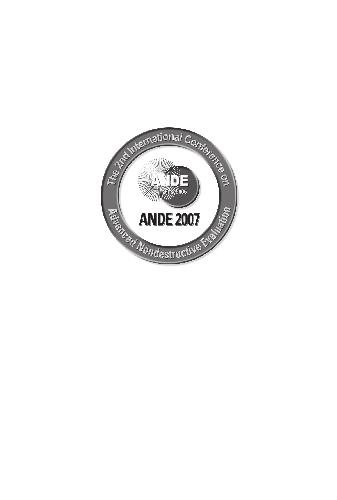

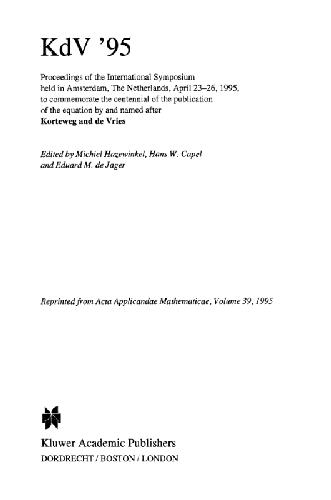

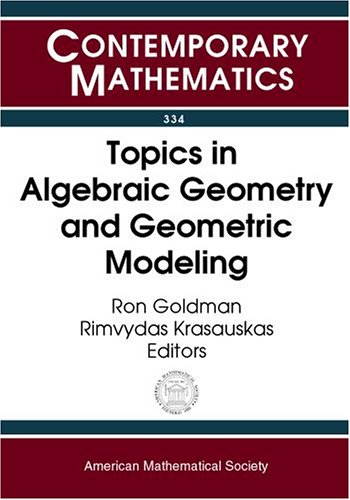
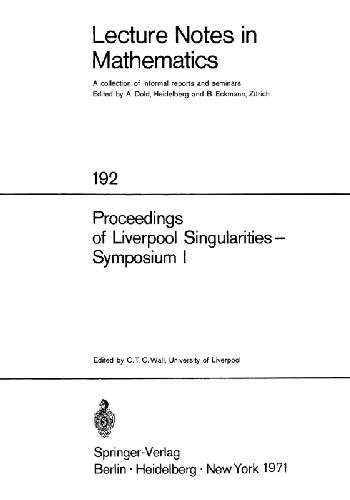
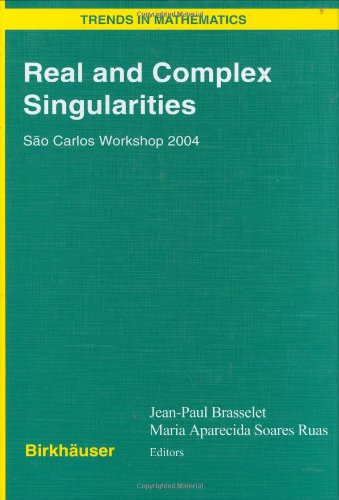
Reviews
There are no reviews yet.